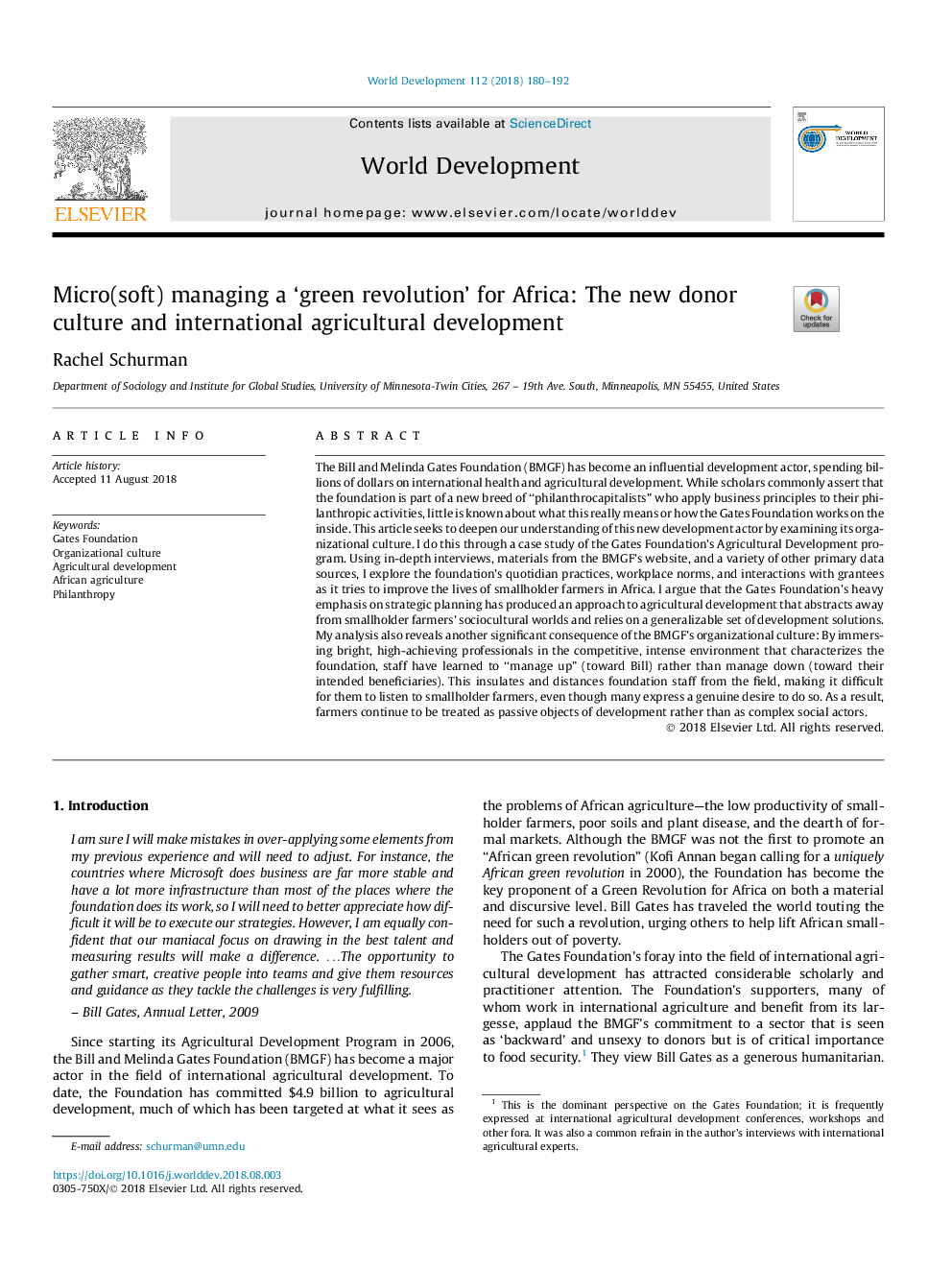| Article ID | Journal | Published Year | Pages | File Type |
|---|---|---|---|---|
| 9953085 | World Development | 2018 | 13 Pages |
Abstract
The Bill and Melinda Gates Foundation (BMGF) has become an influential development actor, spending billions of dollars on international health and agricultural development. While scholars commonly assert that the foundation is part of a new breed of “philanthrocapitalists” who apply business principles to their philanthropic activities, little is known about what this really means or how the Gates Foundation works on the inside. This article seeks to deepen our understanding of this new development actor by examining its organizational culture. I do this through a case study of the Gates Foundation's Agricultural Development program. Using in-depth interviews, materials from the BMGF's website, and a variety of other primary data sources, I explore the foundation's quotidian practices, workplace norms, and interactions with grantees as it tries to improve the lives of smallholder farmers in Africa. I argue that the Gates Foundation's heavy emphasis on strategic planning has produced an approach to agricultural development that abstracts away from smallholder farmers' sociocultural worlds and relies on a generalizable set of development solutions. My analysis also reveals another significant consequence of the BMGF's organizational culture: By immersing bright, high-achieving professionals in the competitive, intense environment that characterizes the foundation, staff have learned to “manage up” (toward Bill) rather than manage down (toward their intended beneficiaries). This insulates and distances foundation staff from the field, making it difficult for them to listen to smallholder farmers, even though many express a genuine desire to do so. As a result, farmers continue to be treated as passive objects of development rather than as complex social actors.
Related Topics
Social Sciences and Humanities
Economics, Econometrics and Finance
Economics and Econometrics
Authors
Rachel Schurman,
